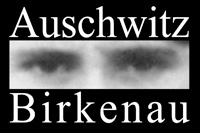




“Little Red House”
(Bunker no. 1)
A gas chamber put into operation at the end of March 1942 in a house whose Polish owners had been expelled, located near the Birkenau camp under construction. The unplastered brick building was called the “Little Red House” because of the color of its walls. Several interior partition walls were demolished during adaptation works, leaving two rooms. Hermetically sealed doors were installed, the windows walled up, and hatches installed through which Zyklon B could be dumped.
The floor space of both the gas chambers was over 80 sq. m, and about 800 people could be crowded in, according to testimony by Rudolf Höss. At first, most of those murdered there were Jews from Sosnowiec and the nearby ghettos, as well as sick prisoners from the camp hospital; later came Jews from other parts of Poland, Slovakia, and Western Europe. Sonderkommando prisoners used narrow‑gauge railroad push cars to carry the bodies of the murdered people to mass graves on the edge of the nearby woods; in August they began burning them in pits dug there (burning pits).
The gas chambers in the Little Red House functioned until the spring of 1943, when larger gas chambers combined with crematoria went into operation. The building was demolished, the ground planted over, and even the bricks from the foundation removed.
